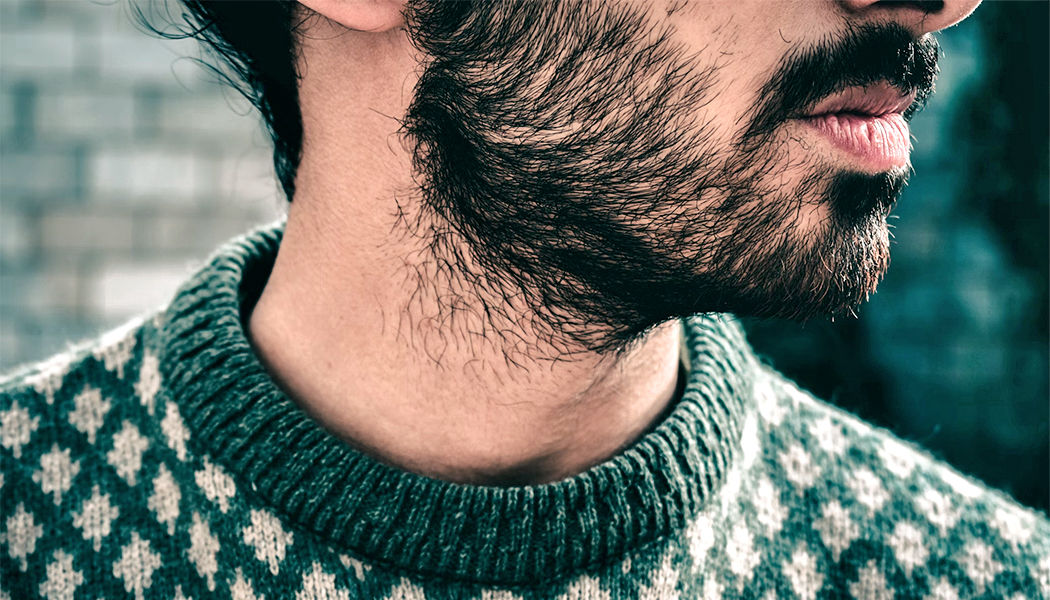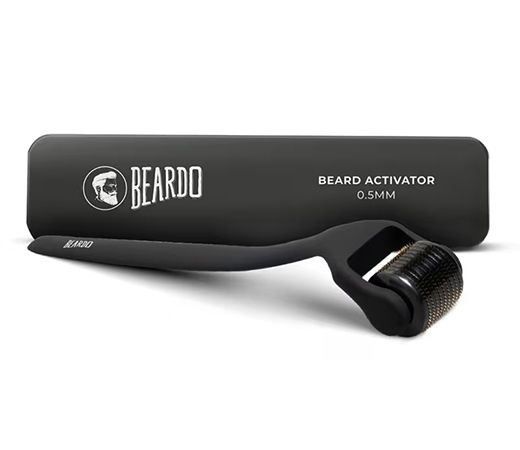An appealing tuft of beard is a feature that many men pride themselves on. After all, it’s an effective source of confidence, style and charisma. However, some prefer to grow out their beard to either avoid the tedium of following through with a shaving routine every day or due to painful razor bumps and burns which can be brought on by skin sensitivity. Either way, a beard is considered to be a preferred masculine feature by many. That’s why beard patches can be a sore point to tackle. Noticing sparse/bald patches on the face where a beard ought to grow can be distressing and put a damper on your confidence. If you want to know how to fix beard patches, it’s important to know what causes them.
What Causes Patchy Beard?
Genetics
Your genetic makeup plays a vital role in determining the quality of your beard growth. We’re born with all our hair follicles. These get activated at different stages. The bearded hair follicles start growing hair when you hit puberty. But how they continue to grow is dependent on your genes. Moreover, if the majority of your male family members have a thick beard, there are chances that you too could effortlessly grow a beard. However, this may not always be the case.
Hormonal Imbalance
Men can undergo hormonal changes due to various reasons like underlying health conditions, ageing or stress. Though we know testosterone to be a crucial hormone in men it’s DHT,(dihydrotestosterone) a subcategory of testosterone, which influences the hair growth cycle. A patchy beard, hair loss, and weak hair follicles can be some symptoms of low testosterone levels.
Alopecia Areata
Alopecia Areata is an autoimmune disease that causes unpredictable hair loss in clumps and patches. This happens when the immune system starts attacking the hair follicles on the scalp, face and body. Though there’s limited research on the causes behind alopecia areata, it’s still believed that it can be brought on by environmental conditions or other factors like prolonged phase of stress.
Age
Most adolescent males will start noticing beard growth in their late teens. This is when the testosterone levels are at peak due to puberty so the chances of developing a beard are high. With that being said, your mid-twenties are when men’s beards reach maturity. If you’re still in your early twenties or late teens and are yet to see the first facial sprout, don’t be discouraged. Everyone’s beard growth cycles differ so you will need to be patient.
Tips On How To Fix a Patchy Beard
Let It Grow Out
Sometimes, the best way to reduce patches is to stop shaving your beard temporarily. Allow your beard to naturally grow out for at least 2-3 months. We know it’s a game of patience but this will eventually allow the follicles in the patches to grow hair. Moreover, if you have sensitive skin, it will give the skin and hair follicles enough time to heal from the constant run-ins with razor bumps and burns.
Keep Beard Styling To A Minimum
Trying new beard styles is a fun way to express your style and a creative way to embrace the sparse nature of your beard. However, we suggest keeping the styling to a minimum as constant touching and styling can lead to breakage, follicle tension and clogged roots owing to the constant tugs, pulls and styling products.
Use a Beard Growth Oil
Though short-term, an effective way to activate dormant or weak hair follicles is to give it a good massage. Improved blood circulation nourishes the roots thereby improving the anagen phase of your beard growth. Also, did you know your beard can get dry and frizzy? This makes the strands brittle and prone to breakage. Giving your beard a deep oil massage will make it soft, nourished and manageable.
Nykaa Man Recommends:
Try Microneedling/Derma Rolling
Though this may sound painful, we assure you that this device has tremendous benefits Micro-needling or derma rolling involves poking multiple tiny holes into the skin to create controlled skin punctures. Though these perforations are only limited to the topmost and mid layer of the skin, they still trigger the body’s wound healing function which amplifies the rate of collagen production in the skin. This not only helps in skin cell turnover, it also activates dormant hair follicles. We recommend you use this device once or twice a week. If you’re using a beard growth solution or minoxidil, then always 24 hours after a microneedling session to avoid irritation. Another crucial factor is to keep the micro-needling device sterilised and stored in proper conditions to avoid skin infection.
Nykaa Man Recommends:
Brush Your Beard At Night
If you have extremely sensitive skin or have a low pain threshold, then opt for brushing your beard instead. Doing so will still improve blood circulation and strengthen the hair follicles. For better results, accompany this step with either a beard oil or cream to keep the tuft manageable and well-groomed.
Nykaa Man Recommends:
Follow A Skincare Routine With Actives
While this may not be directly linked to beard growth, the health of your skin can influence the quality of hair follicles and the quality of beard growth. Accumulation of dead skin cells and exposure to harmful UV rays can contribute to stunted beard growth. That’s why we urge you to follow the best 3-step skincare regimen which is cleanser, moisturiser and sunscreen. Make sure the cleanser is gentle and suits your skin type. Choose a nighttime face cream with retinol which is a potent ingredient that prevents premature ageing, and aids in new cell turnover. Accompanying retinol with a beard growth serum will also boost its performance. For daytime, always use sunscreen so that the harsh sun doesn’t cause follicle damage. Use one with vitamin C as it’s a powerful antioxidant which fights free radicals and will protect your skin from oxidative damage.
Nykaa Man Recommends:
Improve Your Dietary Intake
We know you’ve heard this before. Nevertheless, we still reinforce this as it’s an effective means to nourish the hair follicles from within. In addition to healthy foods, you can even rely on dietary supplements like biotin, collagen and healthy fatty acids like omega-3, 6 and 9.
Nykaa Man Recommends:
Consult A Dermatologist
If you notice more hair loss other than just a patchy beard then this could be a symptom or indication of an underlying health condition. In this case, it’s always wise to consult either a dermatologist or a physician to fish out the root cause before following the aforementioned steps for an expert-recommended solution on how to fix beard patches and other signs of hair loss.












